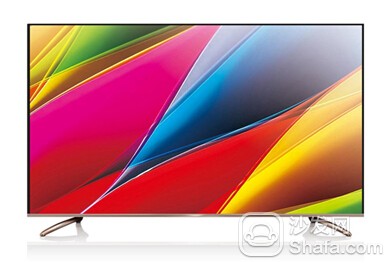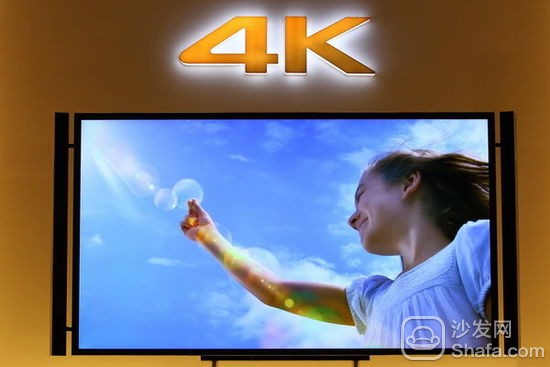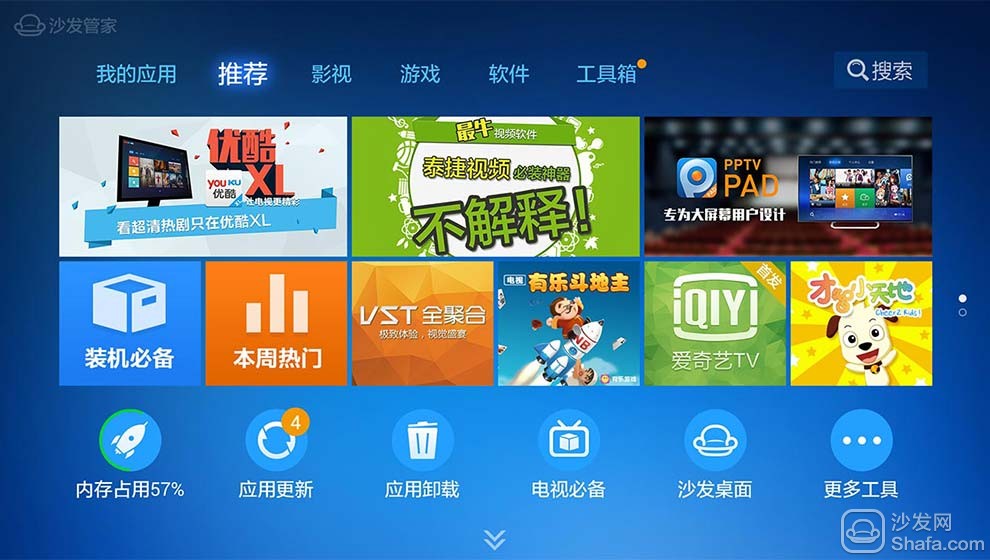In 2014, it was like a dream to be awakened to the Chinese color TV industry. In the aftermath of the welfare and energy-saving and subsidy-free subsidy that has gone through replacement, the cold weather has come. However, it is gratifying that TV makers have already begun to self-satisfaction with their major exams, or are pushing for breakthroughs in new technologies, or embracing the transformation of the Internet. The next TV revolution is already taking place.
New Normal: Slowing Growth, Changing Competitive Models
The word "winter" best describes the overall situation of China's color TV in 2014. According to data from Ovid Consulting, in 2014, China’s annual sales of color TVs were 45.09 million units, a year-on-year decline of 5.6%, the first negative growth in 30 years. At the same time, the average price of TVs will go down, and companies will face the severe challenge of falling “profits†in both volume and price.
Ovey predicts that the slowdown in growth rate will become the new norm. By 2017, the market capacity will not exceed 46 million units. This will cause the competition between manufacturers to shift from “incremental†to “stockâ€, and from “price†to “ quality".
Woe, the blessing of the reliance. Cold winter is not a bad thing. It will force domestic TV companies to accelerate "transition" and end long-term low-price strategies. Facts have proved that mastering technological advantages is the key to winning the stock market. When almost all color TV makers lowered their sales forecast for 2015, technology companies Han Samsung and LG increased their targets. Samsung TV sets its global sales target at a record 60 million units, equivalent to the total of five companies including TCL, Skyworth, Sony, Sharp, and Toshiba.
New product outbreak: is the future technology OR girl?
New technology is considered to be the key to "breaking ice," just as super-thin LEDs replaced the cumbersome CRT.
In 2014, TV industry saw the emergence of many new concept products such as curved LED, OLED, Quantum Dots (QLED), ULED, and Internet TV, which is almost equal to the sum of the past five years.
Insiders pointed out that although these products have played the "future TV" banner, but the technical content, market performance varies. The "improved technologies" such as ULEDs are optimized for panel light control, improved contrast and color, and can only count 1.5 generations of products. What is truly disruptive is the three technological innovations of OLEDs, curved surfaces and quantum dots.
OLED has more than ever color and contrast and is considered to be the future direction of television. However, due to technological problems such as burning screen and life span, together with the exaggerated price of tens of thousands of yuan, the market performance in 2014 was bleak with a capacity of only 30,000 units. In this regard, LG firmly promoted, Samsung with the OLED leader believes that the time has not yet arrived, the LED market is still dynamic, focused on LED surface, quantum dot technology. At present, the surface LED market has grown rapidly and is expected to exceed 1 million units next year. However, people in the industry pointed out that they are not in an all-or-nothing relationship. Surfaces and quantum dots can also be used in OLEDs.
It is reported that at the 2015CES exhibition, Samsung will launch a quantum dot surface UHD TV and the new Tizen system, which can even play Sony PS games. Perhaps television in the future is the synthesis of many innovative technologies, not the victory of a certain technology.
UHD trend, left OR right?
In comparison, the UHD market has opened up and really entered the consumer's perspective. The data shows that in 2013 UHD TV sales were only 1 million units, while in 2014 it exceeded 8 million units, and the penetration rate reached 17%. This proportion is even higher on the 55-inch living room TV.
At the same time, UHD is also a profitable product for color TV manufacturers, and competition is already heating up. In the face of different consumer choices, there are two trends: high-end and close-to-the-earth. Although the same is called UHD, there are significant differences in performance and price. On the one hand, Samsung and Sony have obvious advantages in picture quality, and all possess UHD exclusive technology. The effect of converting ordinary film sources into UHD image quality is achieved, and the problem of lack of 4K film sources is alleviated. It is called “professional UHDâ€. On the other hand, some manufacturers have adopted the "four-color 4K" "cheap" panel, saving nearly 30% of the cost, so that UHD Ultra HD and FHD Full HD price is almost the same. But substituting "white" for the "effective color" subtraction makes UHD's proud resolution and color greatly reduced.
However, it is hard to say who is right and wrong. Ultimately, it depends on how consumers choose.
Whose future? "Traditional" OR "Internet"
In 2014, outside the new technology, Internet thinking is the one that has the greatest impact on the television industry. In fact, as early as 2013, LeTV Super TV's low-cost plus content profit model triggered the industry to exclaim, "the wolf came." What's even more frightening is the fact that its marketing methods are virtually inaccessible. With the listing of LeTV Super TV, a letter from LeTV CEO Jia Yueting to all employees is circulating on the Internet: “Samsung is one of the great and respectable companies, but in the era of social networking, traditional TV manufacturers represented by Samsung. Their thinking and patterns in the industrial age will grow old."
The courage to "reform" has been widely praised. However, more than a year later, marketing is more than practical. According to LeTV, its TV sales will exceed 1.5 million units in 2014. Compared with Hisense, TCL, Skyworth and other 10 million traditional manufacturers and Samsung of 54 million units, it is still too early to talk about subversion.
The misfortune is not alone, and the Internet that is good at playing the ball is also in big trouble this year. On the one hand, the “APP Video Down Order†made the proud content become the decoration; on the other hand, the traditional enterprise accelerated the transformation, “hardware + content†and “online + offline†model is all traditional TV manufacturers. Consensus.
However, this does not mean that the traditional has brought down the Internet. In the future, TV is a large platform. No one can completely occupy the entire industrial chain. Cooperation and win-win is the only way out.
All in all, the 2014 dream awakened did not mean the end, but the beginning of the next dream. Let us wait for the arrival of the next color change in the industry.

New Normal: Slowing Growth, Changing Competitive Models
The word "winter" best describes the overall situation of China's color TV in 2014. According to data from Ovid Consulting, in 2014, China’s annual sales of color TVs were 45.09 million units, a year-on-year decline of 5.6%, the first negative growth in 30 years. At the same time, the average price of TVs will go down, and companies will face the severe challenge of falling “profits†in both volume and price.
Ovey predicts that the slowdown in growth rate will become the new norm. By 2017, the market capacity will not exceed 46 million units. This will cause the competition between manufacturers to shift from “incremental†to “stockâ€, and from “price†to “ quality".
Woe, the blessing of the reliance. Cold winter is not a bad thing. It will force domestic TV companies to accelerate "transition" and end long-term low-price strategies. Facts have proved that mastering technological advantages is the key to winning the stock market. When almost all color TV makers lowered their sales forecast for 2015, technology companies Han Samsung and LG increased their targets. Samsung TV sets its global sales target at a record 60 million units, equivalent to the total of five companies including TCL, Skyworth, Sony, Sharp, and Toshiba.
New product outbreak: is the future technology OR girl?

New technology is considered to be the key to "breaking ice," just as super-thin LEDs replaced the cumbersome CRT.
In 2014, TV industry saw the emergence of many new concept products such as curved LED, OLED, Quantum Dots (QLED), ULED, and Internet TV, which is almost equal to the sum of the past five years.
Insiders pointed out that although these products have played the "future TV" banner, but the technical content, market performance varies. The "improved technologies" such as ULEDs are optimized for panel light control, improved contrast and color, and can only count 1.5 generations of products. What is truly disruptive is the three technological innovations of OLEDs, curved surfaces and quantum dots.
OLED has more than ever color and contrast and is considered to be the future direction of television. However, due to technological problems such as burning screen and life span, together with the exaggerated price of tens of thousands of yuan, the market performance in 2014 was bleak with a capacity of only 30,000 units. In this regard, LG firmly promoted, Samsung with the OLED leader believes that the time has not yet arrived, the LED market is still dynamic, focused on LED surface, quantum dot technology. At present, the surface LED market has grown rapidly and is expected to exceed 1 million units next year. However, people in the industry pointed out that they are not in an all-or-nothing relationship. Surfaces and quantum dots can also be used in OLEDs.
It is reported that at the 2015CES exhibition, Samsung will launch a quantum dot surface UHD TV and the new Tizen system, which can even play Sony PS games. Perhaps television in the future is the synthesis of many innovative technologies, not the victory of a certain technology.
UHD trend, left OR right?

In comparison, the UHD market has opened up and really entered the consumer's perspective. The data shows that in 2013 UHD TV sales were only 1 million units, while in 2014 it exceeded 8 million units, and the penetration rate reached 17%. This proportion is even higher on the 55-inch living room TV.
At the same time, UHD is also a profitable product for color TV manufacturers, and competition is already heating up. In the face of different consumer choices, there are two trends: high-end and close-to-the-earth. Although the same is called UHD, there are significant differences in performance and price. On the one hand, Samsung and Sony have obvious advantages in picture quality, and all possess UHD exclusive technology. The effect of converting ordinary film sources into UHD image quality is achieved, and the problem of lack of 4K film sources is alleviated. It is called “professional UHDâ€. On the other hand, some manufacturers have adopted the "four-color 4K" "cheap" panel, saving nearly 30% of the cost, so that UHD Ultra HD and FHD Full HD price is almost the same. But substituting "white" for the "effective color" subtraction makes UHD's proud resolution and color greatly reduced.
However, it is hard to say who is right and wrong. Ultimately, it depends on how consumers choose.
Whose future? "Traditional" OR "Internet"
In 2014, outside the new technology, Internet thinking is the one that has the greatest impact on the television industry. In fact, as early as 2013, LeTV Super TV's low-cost plus content profit model triggered the industry to exclaim, "the wolf came." What's even more frightening is the fact that its marketing methods are virtually inaccessible. With the listing of LeTV Super TV, a letter from LeTV CEO Jia Yueting to all employees is circulating on the Internet: “Samsung is one of the great and respectable companies, but in the era of social networking, traditional TV manufacturers represented by Samsung. Their thinking and patterns in the industrial age will grow old."
The courage to "reform" has been widely praised. However, more than a year later, marketing is more than practical. According to LeTV, its TV sales will exceed 1.5 million units in 2014. Compared with Hisense, TCL, Skyworth and other 10 million traditional manufacturers and Samsung of 54 million units, it is still too early to talk about subversion.
The misfortune is not alone, and the Internet that is good at playing the ball is also in big trouble this year. On the one hand, the “APP Video Down Order†made the proud content become the decoration; on the other hand, the traditional enterprise accelerated the transformation, “hardware + content†and “online + offline†model is all traditional TV manufacturers. Consensus.
However, this does not mean that the traditional has brought down the Internet. In the future, TV is a large platform. No one can completely occupy the entire industrial chain. Cooperation and win-win is the only way out.
All in all, the 2014 dream awakened did not mean the end, but the beginning of the next dream. Let us wait for the arrival of the next color change in the industry.
Recommended installation sofa butler, download address: http://app.shafa.com/

